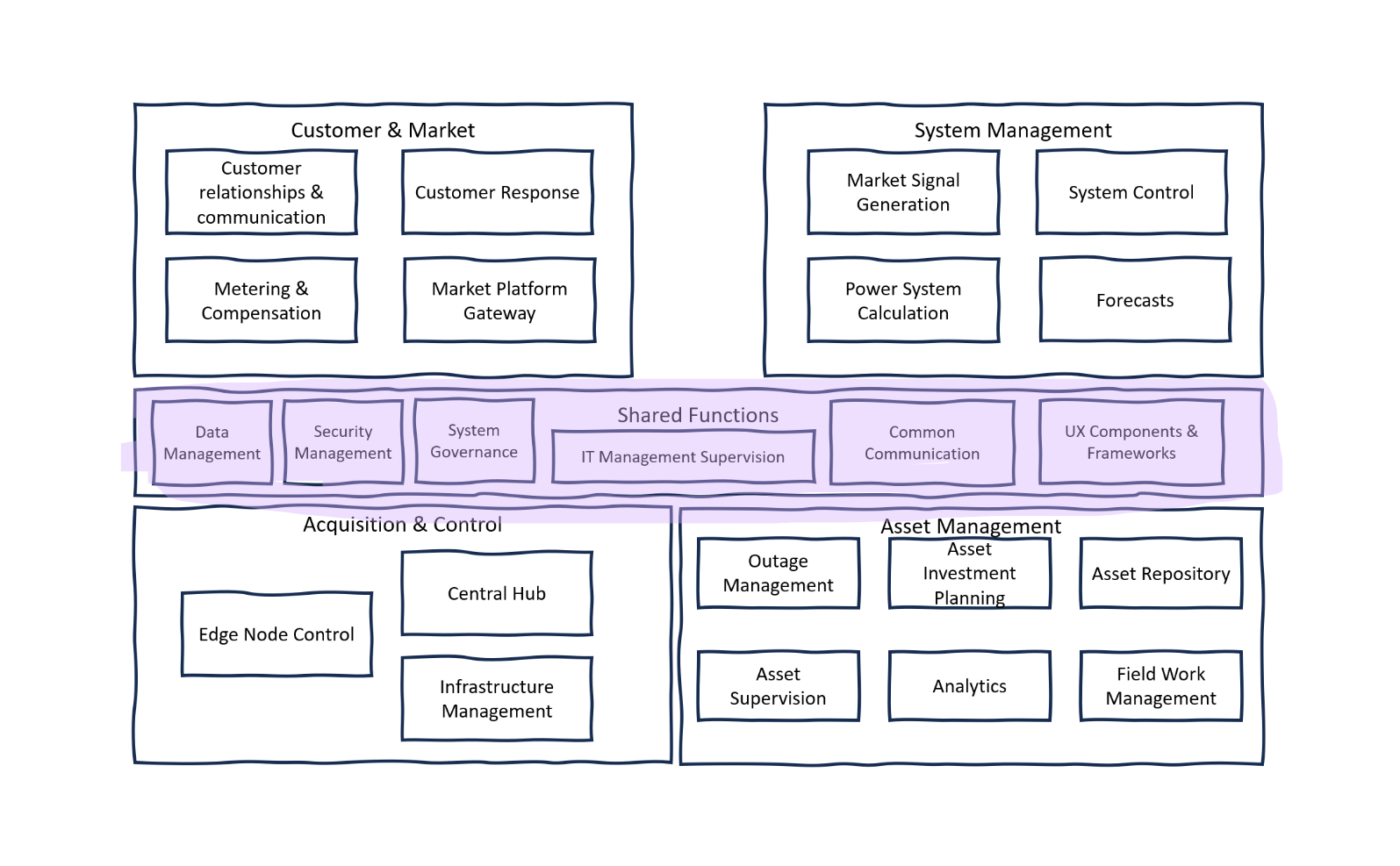Shared Functions
Covering the digitial functionalities that are required by each of category.power-system ref-architecture

Description
The Shared Functions in the reference architecture of a power system encapsulate the essential services and processes that support various aspects of the system's operation. They provide the foundational capabilities that are utilized across different system components, ensuring that the power system operates efficiently, securely, and in compliance with regulatory standards. These functions are crucial for the seamless integration and management of the system's diverse elements, from data handling to user experience.
Sub-components:
Data Management: is the backbone of the Shared Functions, focusing on the handling of all system data. This includes long-term storage solutions that ensure data integrity over time, message queuing services that manage the flow of data between system components, and data validation processes that ensure the accuracy and reliability of the data used across the system.
Security Management: encompasses cybersecurity measures to protect the system from digital threats and privacy management to safeguard sensitive information. This function is critical in an era where cyber threats are increasingly sophisticated, requiring robust security protocols to protect infrastructure and customer data.
System Governance: is concerned with the overarching management and regulatory compliance of the power system. It includes self-registering components that can autonomously identify themselves within the system and self-healing mechanisms that allow the system to recover from faults automatically. Governance aligns system operations with regulatory standards and best practices.
IT Management Supervision: oversees the technical aspects of system operation, such as network administration and service administration, ensuring that all IT components are functioning correctly and efficiently. It also includes threat monitoring, which is vital for the early detection and mitigation of potential IT-related risks.
Common Communication and Media: function ensures that there are standardized communication protocols and infrastructure across the system, which is crucial during emergency and crisis management situations. It also includes a messaging queuing service and directory for efficient communication routing.
